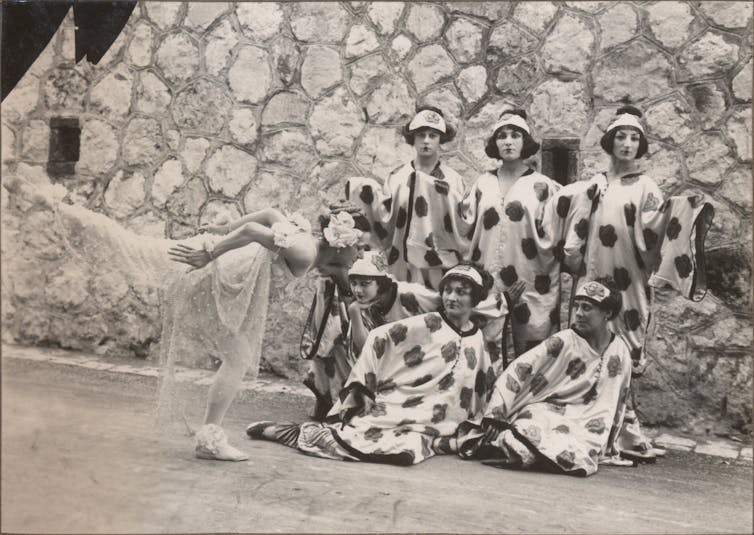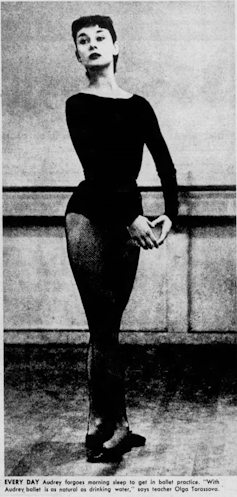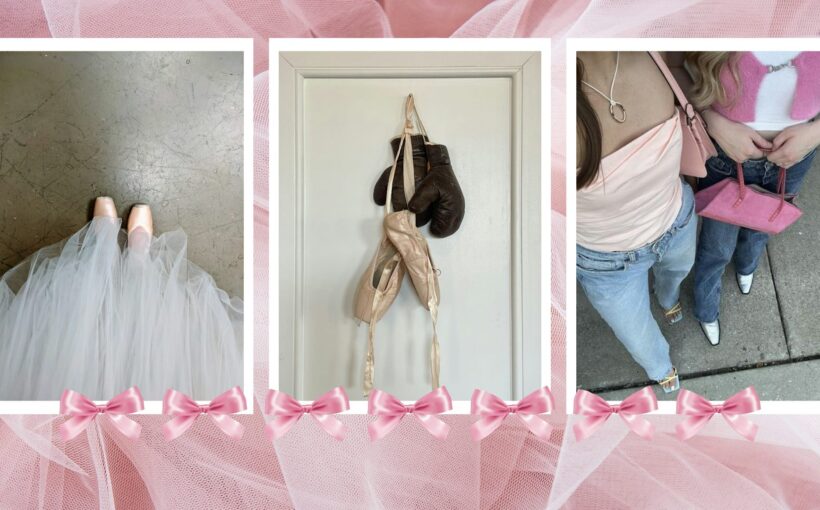
Balletcore, the fashion trend inspired by the costumes of traditional ballet performers, has been popular since 2022, inspired by the spring/summer runway collections of designers such as Molly Goddard and Simone Rocha. The trend is inspired by the practical, functional clothing worn in a ballerina’s daily practice – part of the disciplined training and ritual of the art form. Think bodysuits, wrap cardigans, tulle skirts, leggings and ballet flats.
The trend is a fresh spin on a long history of fashion designers being inspired by the art of ballet. Its continued appeal is perhaps due to its accessibility. With such strong visual cues, this aesthetic can easily be achieved through vintage and second-hand shopping.
Because of its soft colours and silhouettes, balletcore is often associated traditional notions of femininity, grace, control, sophistication and discipline. However, this has not always been the case. The ballerina was once considered an “immoral” figure.
No one’s 20s and 30s look the same. You might be saving for a mortgage or just struggling to pay rent. You could be swiping dating apps, or trying to understand childcare. No matter your current challenges, our Quarter Life series has articles to share in the group chat, or just to remind you that you’re not alone.
Read more from Quarter Life:
-
Understanding ‘underconsumption core’: How a new trend is challenging consumer culture
-
High hemlines and maximum thigh exposure: a brief history of men’s shorts
-
Fast fashion is harming our planet — these 4 tips can help you build a more sustainable wardrobe
Ballet was originally performed by male aristocrats, and it wasn’t until the 18th and early 19th centuries that it came to be dominated by women. Costumes at this time mirrored contemporary women’s fashions. To allow for range of motion, and so the audience could appreciate the dancer’s intricate footwork, hemlines were raised and silhouettes emphasised the female form. These factors reinforced the perception that appearing on stage was not a respectable profession.

The early 20th century was a major turning point in the perception of ballet and its relationship with fashion. Between 1910 and 1929, the Paris-based Ballet Russes (The Russian Ballet) represented modern ballet at its most innovative, and this was hugely influential for designers such as Paul Poiret.
Poiret and fellow designer Gabrielle “Coco” Chanel were highly competitive, and both were inspired by the exotic creations of the company’s chief costume designer Leon Bakst. Chanel later went on to design for the company and the loosely fitting silhouettes and light diaphanous fabrics worn by the Ballet Russes dancers became part of her signature look. The move away from traditional corsets allowed for greater freedom of movement and was a significant influence on the leading Parisian designers of the time.
This influence continued through the century for some very practical reasons. During and after the second world war, clothing and footwear was rationed, meaning creative use of garments and materials, along with recycling, was necessary and encouraged.
Dance-wear and sportswear were not rationed in the same way as civilian attire. This made balletic fabrics and styles popular with leading international fashion designers such as Claire McCardell.
During her training at Parsons School in Paris, McCardell had access to Chanel’s samples which she could deconstruct and sketch. This helped shape her design ethos and she is acknowledged as being one of the designers responsible for the modern American sportswear look, laying the foundations for Diane Von Furstenberg and Donna Karan.

In the 1940s, the editor of Harper’s Bazaar, Diana Vreeland, published articles on wearing ballet flats as everyday fashion shoes. McCardell took this to the next level by working directly with the dance-wear brand Capezio to produce shoes in fabrics that matched her garments.
This adoption of ballet wear continued into the 1950s and 1960s through the clothes worn by female “beatniks”. “Beatniks” was originally a pejorative term first coined in 1958 to describe a generation of post-second world war youth who eschewed traditional values and formal dress. The movement was a reaction against American mainstream consumerism and prized individuality and freedom of expression reflecting their anti-establishment values.
Beatnik women wore a “uniform” of black jeans, capri pants, Breton stripes, polo necks, wrap ballet cardigans paired with ballet flats, and their cool nonchalance still prevails today with the popularity of these now classic styles. This counterculture movement was extremely influential in informing costume design and the styles of Hollywood stars such as Audrey Hepburn and Grace Kelly, which then became more mainstream.
Contemporary iterations and “icons”
In the early 1980s the tutu was adopted by singer Cyndi Lauper as part of her iconoclastic stage look. As a New York-based artist and performer, this could have inspired costume designer Patricia Field’s ideas for the opening credits of TV show Sex in the City (1998), which featured protagonist Carrie Bradshaw (Sarah Jessica Parker) strutting the city streets wearing a tutu.
In 1997 Field purchased this stage prop for just US$5 (£3.89) in a garment district discount bin, it recently sold at auction for $52,000 (£40,500). The cultural and financial equity created by this single garment speaks to the power of ballet and how the art form has been adopted and subverted over time. The same goes for the signature ballet flats worn by singer Amy Winehouse and the Molly Goddard tulle dress worn by Jody Comer in Killing Eve, which symbolised feminine rebellion and nonconformity.
Balletcore continues to morph and evolve. In 2024 it was one of resale platform Depop’s most searched for trends. The art form endures, inspiring fashion and style across generations.

Looking for something good? Cut through the noise with a carefully curated selection of the latest releases, live events and exhibitions, straight to your inbox every fortnight, on Fridays. Sign up here.
![]()
Tamsin McLaren does not work for, consult, own shares in or receive funding from any company or organisation that would benefit from this article, and has disclosed no relevant affiliations beyond their academic appointment.



